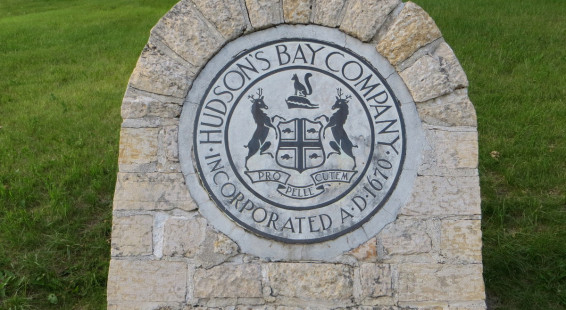
I’ve visited many interesting and historic places in my life, and hope to see many more. Lower Fort Garry was the very first of these and, in a way, may have stimulated my desire to see and visit unusual destinations. As a boy we traveled here by school bus for field trips, learning of the fort’s history and seeing actors in period costumes telling us about the lives they lead in the 19th century. It was a hard life — much work, long bitterly cold winters, warm to hot summers filled with millions of mosquitoes. Not at all pleasant.
Lower Fort Garry was built as a Hudson’s Bay Company post in what was then Rupert’s Land (now is Manitoba). Fort Garry (or Upper Fort Garry) has been absorbed by greater Winnipeg, but the Lower Fort still sits in a park-like setting not unlike what it must have been like after it was first constructed.
In 1826 Upper Fort Garry was destroyed by a severe flood, and a place that would be safe and could avoid future floods was sought — not an easy task on the very flat Canadian plains. The site chosen was on relatively higher ground and below a major rapids (St Andrew’s), avoiding the need to portage the York boats used as transportation and their cargo of heavy fur bundles.

Outer walls, Lower Fort Garry
The buildings at the fort, some of which were completed in 1830, included a “fur loft”, company store, small warehouse and trader’s office, and the “Big House” (residence for the governor of the HBC or other high-ranking official). Later additions included a warehouse and a men’s house. The fort’s signature thick stone walls were completed in the 1840s, adding an icehouse, powder magazine, bakehouse, and warehouse. These stone walls were constructed of locally quarried rock and were non-military, intended only to make the fort appear more important and impressive to visitors.
The fort never became the busy center it was intended to be as most of the population settled 20 miles upriver at the junction of the Red and Assiniboine Rivers (“The Forks”). That was a substantial distance in the 19th century and people objected to the extra travel required to do business at the new fort. Consequently, Upper Fort Garry was rebuilt in stone at The Forks.
Although the Lower Fort did trade furs, its main purpose was to be a supply depot for the Red River settlement and the surrounding Aboriginal people. The post traded manufactured goods to farmers and hunters for food that was used for provisioning company treks into the north. The fort became a small industrial center by the 1860s having developed a flour mill, sawmill, forge, and a brewery.
On August 3, 1871, Lower Fort Garry was the site of the first treaty in Western Canada, established between the federal government and seven chiefs of the First Nations. British troops occupied the Fort at times, and Northwest Mounted Police were stationed here in the winter of 1873-74. The Fort was to become a penitentiary, a mental hospital (1885–1886), and a golf course/motor country club (1911–1963).
The Hudson’s Bay Company owned the fort until 1951 when it was given to the federal government. The site was designated a National Historic Site in 1958.

Artwork, Lower Fort Garry Visitor Center
Visiting the Fort Today:
Your visit begins at a modern visitor center, which has a number of interesting exhibits and displays.
My favorite exhibits were of the York boats used to transport furs and goods to and from the Fort, and of an art-piece highlighting a crew portaging a York boat….
From the Visitor Center you take a path to the Fort. Between May and September, costumed interpreters recreate life at Lower Fort Garry in the early 1850s. It makes for an interesting and fun day.
(Click on thumbnails to enlarge, right arrow to advance slideshow)